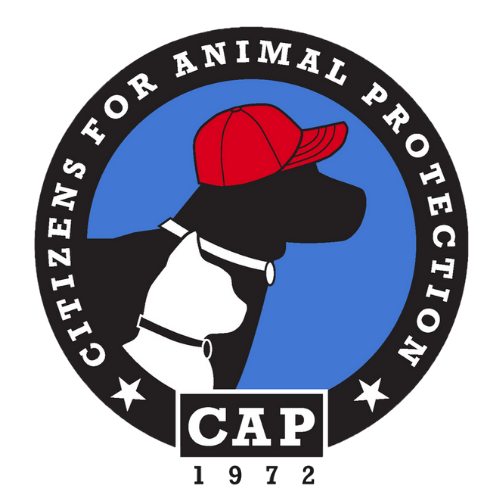WHEN TO HELP WILDLIFE
The CAP Animal Shelter is only licensed to care for domesticated companion animals. We are unable to take in injured or displaced wildlife. Yet we totally get that the urge to help an animal, even a wild animal, can be irresistible, especially if that animal is injured, crying, or a seemingly helpless newborn. And while we focus on those animals kept as companions, CAP realizes you may need some direction when faced with a wildlife dilemma. Because no matter how good our intentions, our actions could reduce the animal’s chances of survival, cause extreme stress, and even physically hurt them.
OBSERVE. Is the animal bleeding, been in a dog or cat’s mouth, or exhibiting an obvious injury? Does the animal appear to be alone, or tame? Is the animal’s fur or feathers full or covered in fly eggs (they look like rice), cold, or wet? Is the animal crying non-stop? Do not try to pet or touch a wild animal.
LOOK AROUND. Are you and the animal safe? Is this the animal’s habitat? Is there a nest nearby? Don’t assume a young or injured animal is alone. Parents don’t stay with young babies constantly, but often keep a watchful eye from a distance while foraging for food and avoiding predators. Injured animals may also be targeted by other prey animals wanting an easy meal. Young birds, fully feathered, maybe calling for nearby parents to bring food and your presence might be keeping a young one’s parents away.
MAKE THE CALL. If you have determined that the animal is genuinely orphaned or clearly sick or injured, call your local permitted wildlife rehabilitator. They can give you specific rescue advice for the species with which you are dealing. NEVER attempt to give food or water to an injured animal. Doing so might complicate the treatment of an injured animal.
USE CAUTION. Wild animals will attempt to defend themselves. Consider what tools you have available to use like gloves or protective eyewear if you attempt to capture and transport any wildlife. Other helpful items include blankets/towels, nets, or anything else that allows you to assist the animal without risking direct contact.
TAKE ACTION. You will need to place the animal into a pet carrier or ventilated cardboard box, lined with a towel or newspaper with a minimum of handling. Wearing protective gear, you might scoop up the animal using a stiff board or shovel you push gently under the body. A blanket/ towel or net thrown over the animal can also protect you and the animal you are attempting to help. Secure the box with duct tape so that the animal cannot escape. Keep the animal somewhere warm and quiet and take it to your nearest wildlife rehabilitator as soon as possible.
If you find a sick or injured wild animal, please call the following local organizations for advice on the best way to help.
Texas Wildlife Rehabilitation Coalition (TWRC)
10801 Hammerly Blvd. #200, Houston, TX 77043
Phone: 713-468-8972 (TWRC)
Wildlife Center of Texas
7007 Old Katy Rd. Houston, TX 77024
Phone: 713-861-9453 (WILD)
WILDLIFE ARE NOT PETS. Do not attempt to keep (or kidnap!) any wildlife for a possible pet. In Texas, as well as in most states, owning wildlife is illegal without special permits. The animal must be turned over to a licensed rehabilitator as soon as possible.
“Until one has loved an animal, a part of one's soul remains unawakened.”
--Anatole France



